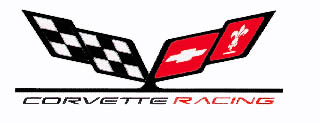|
|||||||||||||||||||||||||||||||||||||||||||||||||||||||||||||||||||||||||||||||||||||
CHEVROLET’S
CORVETTE SUPERCAR CONTINUES REIGN AS LAS VEGAS – The Corvette’s trophy case is currently undergoing the load of adulation bestowed by every major enthusiast in the free world. So what would possess Chevy to jack up its flagship and elevate the performance of what the press has already crowned the king of sports car hill? Corvette Brand Manager Jim Campbell explains: "1998 Corvettes are effectively sold out, so these experiments are definitely not aimed at boosting sales figures. But we know that our customers don’t regard their Corvettes as static sculpture," he noted. "If they’re not enjoying them on some open-road adventure, they’re contemplating modifications aimed at better handling or quicker acceleration. With that in mind, we’ve recently conducted our own research into the most effective ways to improve a current Corvette using aftermarket parts and established procedures." "The Corvette’s engine, suspension and structure have all been engineered with ample potential for higher performance. Our Supercar experiments not only provide enterprising owners with a menu of surefire modifications, they also offer a realistic look at the types of improvements we’re investigating." Chevrolet’s Specialty Vehicles Department used test methods that should be quite familiar to car magazine journalists. Standard ’98 coupes equipped with F45 (adjustable ride control) and Z51 (performance handling package) suspensions were hot lapped on the 2.25-mile road course at Moroso Motorsports Park in Palm Beach Gardens, Florida. To set appropriate performance benchmarks, test driver Andy Pilgrim also flogged a Dodge Viper GTS and Porsche 911 Turbo. While the Porsche was on the U.S. market, it pumped out 400 horsepower and cost a cool $105,765 in standard trim. Baseline tests placed the Corvette about five seconds a lap behind the Viper and four seconds in arrears to the Porsche. The challenge faced by the Specialty Vehicles Department was to close that gap as affordably as possible without reinventing the Corvette. In other words, make the Corvette run harder and faster using parts and procedures that could be duplicated by a clever tuner at home. Phase I focused on handling improvements. Goodyear supplied some of the stickiest original-equipment rubber in its inventory – Eagle F1 Fiorano tires in sizes appropriate for the Corvette. Fikse 18-inch aftermarket wheels were used all around with a 9.5-inch rim width in front and a 10.5-inch rim in back. With even a modest increase in section width (to P295/35ZR-18 size radials), the Z51-equipped Corvette jumped a significant 0.10-g in skid pad cornering tests – from 0.90-g to over 1.00-g. Various anti-roll bars were also evaluated to balance the car and achieve best results not only on the skid pad but also in flat-out road-course lapping. The best combination of skid-pad stick, road-course speed and open road tractability came from a combination of P265/35ZR-18 tires in front and P295/35ZR-18 rubber in back. Upsizing the stock front anti-roll bar with an aftermarket part available from Hotchkis Performance helped dial in the optimum handling balance. With the Corvette’s adjustable suspension set in the Performance mode, the Viper’s lap-time advantage was chopped in half. The beauty of simple wheel, tire and anti-roll bar modifications is that there’s no loss of ride quality. Switching the adjustable suspension to the Tour position yields a comfortable ride perfect for everyday commuting or cross-country excursions. Phase II addressed the power disparity between Corvette and the Moroso pace setters. Specialty Vehicles technicians began with a standard hot-rodding trick that’s been in use since flathead days: cylinder-head modifications. Milling 0.030-in. from the head’s deck surface delivered a nominal increase in compression ratio – from the stock configuration’s 10.1:1 to 10.9:1. The second step, what tuners call "pocket porting," improves airflow through intake and exhaust ports by opening up the bowl areas just below the valve seats. The required hand grinding isn’t difficult, but expertise is required so head mods are best assigned to established machine shops and performance engine builders. The final step was swapping the factory cramshaft for one with longer duration and higher lift. Three external alterations helped the engine’s volumetric efficiency. In lieu of the factory air cleaner, Chevrolet Specialty Vehicles fitted dual K&N conical-type filters (keeping the standard throttle body, mass air flow sensor and intake air duct). The stock double-wall exhaust manifolds were replaced with single-wall designs fabricated from larger-diameter stainless-steel tubing. A low-restriction Corsa tail pipe and muffler assembly was added downstream of the standard Corvette catalytic converter. Dyno tests revealed a healthy 105-horsepower boost in output. The torque peak climbed by 69 lb-ft, yet the curve is still commendably flat so there’s an energetic response when the throttle is nailed at any rpm. More than one hundred extra horsepower is a very worthwhile improvement, considering the reasonable cost of the modifications and the fact that any Corvette owner could make them without removing the block from the car or performing a complete engine tear-down. The stopwatch told the most convincing story: The combination of extra power with improved handling was more than enough to advance the Corvette to pole position at Moroso, ahead of both the $68,000 Viper and the $106,000 Porsche. "Our Corvette Supercar demonstrates that there’s plenty of potential to take on true supercars after only a modest investment in performance improvements," Campbell said. "Specialty Vehicles’ menu of bolt-on modifications should provide Corvette owners with ample inspiration for tuning their own cars." Corvette Supercar
|
|||||||||||||||||||||||||||||||||||||||||||||||||||||||||||||||||||||||||||||||||||||
